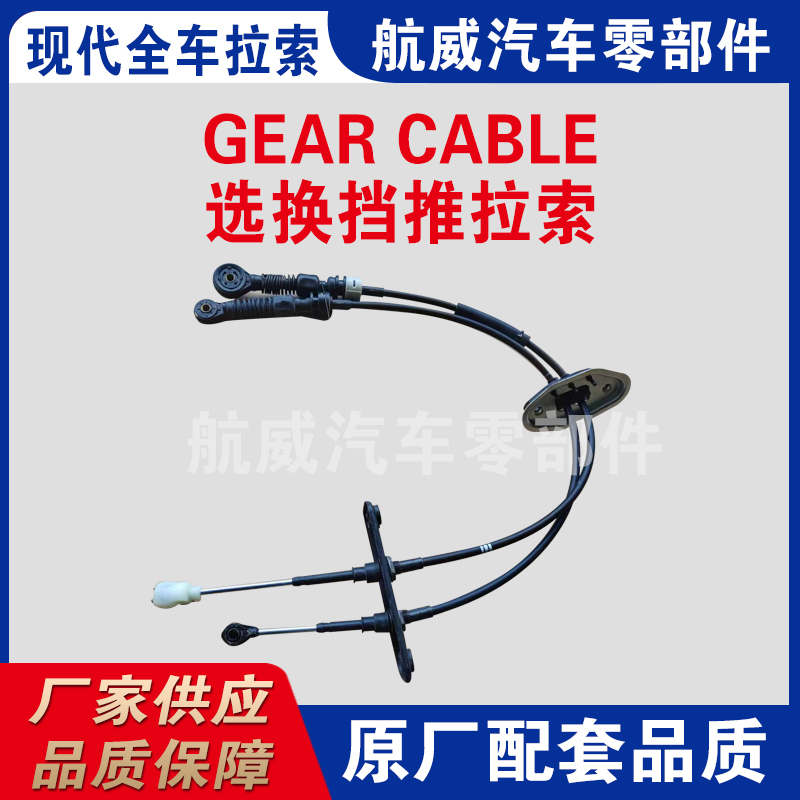Understanding the Function and Importance of Accelerator Cables in Vehicles
Understanding the Importance of Accelerator Cables in Automotive Engineering
Accelerator cables play an essential role in the operation of modern vehicles, serving as a pivotal link between the accelerator pedal and the throttle body. Although often overlooked by the average driver, these components are critical to ensuring a vehicle's responsiveness and performance. This article delves into the significance of accelerator cables, their construction, how they function, and the maintenance practices necessary for optimal vehicle performance.
What is an Accelerator Cable?
An accelerator cable, also known as a throttle cable, is a flexible steel cable housed within a casing. The cable connects the accelerator pedal to the throttle body, which controls the engine’s air intake and, consequently, its power output. Differentiating between older and modern vehicles is crucial; older models predominantly use mechanical systems with cables, while newer vehicles may utilize electronic throttle control (ETC) systems. However, the basic principle of facilitating driver input remains constant.
Construction and Functionality
The construction of an accelerator cable is straightforward but effective. It consists of a strong steel wire that provides tensile strength and flexibility, allowing it to endure the repetitive motion of the accelerator pedal. This wire is lined with a protective sheath, typically made from a durable polymer, which not only reduces friction but also protects against environmental factors such as moisture and dirt.
When a driver presses down on the accelerator pedal, this motion pulls the cable. The cable then transmits this force to the throttle body, which opens or closes to regulate the amount of air entering the engine. This air-fuel mixture is essential for engine combustion and overall performance. Therefore, even slight disruptions in the cable’s operation can lead to significant changes in a vehicle's responsiveness.
Signs of Cable Wear and Tear
Like any other mechanical component, accelerator cables can experience wear and tear over time. Factors such as exposure to extreme temperatures, moisture, and general usage can lead to fraying, kinking, or even snapping of the cable. Drivers should be aware of several warning signs indicating potential issues with the accelerator cable
1. Sticking or Inconsistent Acceleration If the accelerator pedal feels sticky or does not return to its original position smoothly, it’s a sign that the cable may be damaged or improperly lubricated.
accelerator cable

2. Unresponsive Throttle A complete failure to accelerate when pressing the pedal may indicate a broken cable or a disconnect at the throttle body.
3. Abnormal Engine Behavior Sudden increases or decreases in engine RPMs while driving, or if the engine revs without corresponding pedal movement, can indicate a problem with the cable.
Maintenance Tips
Maintaining the accelerator cable ensures longevity and optimal performance. Here are some essential practices vehicle owners can adopt
1. Regular Inspections Periodically check the accelerator cable for signs of fraying or damage. Inspect the connections at both ends—where it attaches to the throttle body and the pedal.
2. Lubrication If the cable appears stiff or not moving smoothly, applying a suitable lubricant can help reduce friction. However, care must be taken to use lubricants that are compatible with the cable material.
3. Replace When Necessary If significant wear is detected or if the cable breaks, it is crucial to replace it immediately. Using the correct manufacturer-recommended parts ensures compatibility and performance.
4. Professional Assistance When in doubt, seeking help from a qualified mechanic can provide peace of mind. They can accurately diagnose issues related to the accelerator cable and perform necessary repairs or replacements.
Conclusion
In summary, accelerator cables are fundamental to a vehicle's performance and driver experience. Awareness of their function, signs of wear, and maintenance practices can significantly enhance vehicle safety and performance. By fostering a proactive approach to automotive care, drivers ensure their vehicles not only remain responsive but also operate efficiently for years to come. Understanding the intricacies of components like the accelerator cable allows drivers to appreciate the engineering marvels that enable their everyday journeys on the road.
-
Workings of Clutch Pipe and Hose SystemsNewsJun.04,2025
-
The Inner Workings of Hand Brake Cable SystemsNewsJun.04,2025
-
The Secrets of Throttle and Accelerator CablesNewsJun.04,2025
-
The Hidden Lifeline of Your Transmission Gear Shift CablesNewsJun.04,2025
-
Demystifying Gear Cables and Shift LinkagesNewsJun.04,2025
-
Decoding Clutch Line Systems A Comprehensive GuideNewsJun.04,2025
